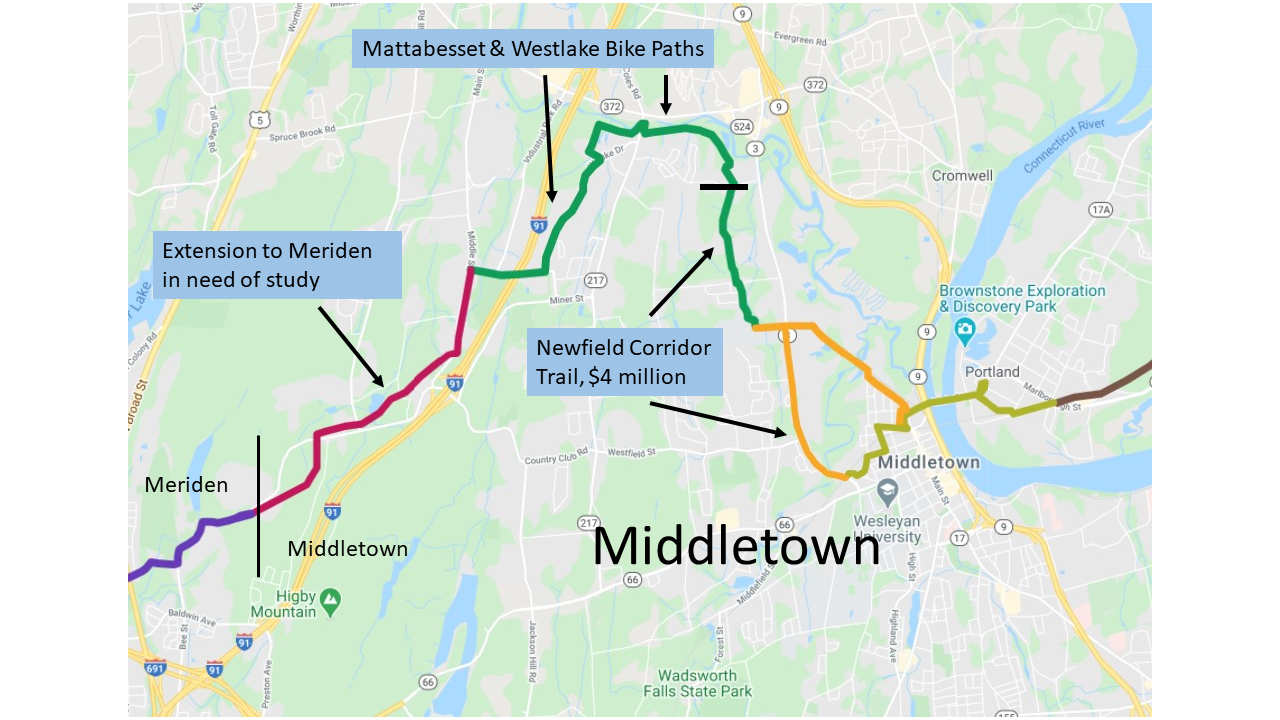 The Jonah Center’s most far-reaching project — to connect the 2 longest multi-use trails in Connecticut — has been awarded 3 grants: a $315,000 route study grant by CT DOT in February 2022; a $500,000 grant by the state bond commission in April 2022; and a $2 million grant by the bond commission in October 2023. We thank Senator Matt Lesser whose leadership and advocacy has enabled this progress and funding. (Please note that none of these funds pass through or benefit the Jonah Center.) These grants will allow the project to proceed from route study (which is now underway) to design and construction work. The most recent $2 million grant is intended to be used as state & local matching funds for $8 million in federal transportation funds to be applied for in the future. In short, we are well on our way to making the connector route a reality. Continue reading
The Jonah Center’s most far-reaching project — to connect the 2 longest multi-use trails in Connecticut — has been awarded 3 grants: a $315,000 route study grant by CT DOT in February 2022; a $500,000 grant by the state bond commission in April 2022; and a $2 million grant by the bond commission in October 2023. We thank Senator Matt Lesser whose leadership and advocacy has enabled this progress and funding. (Please note that none of these funds pass through or benefit the Jonah Center.) These grants will allow the project to proceed from route study (which is now underway) to design and construction work. The most recent $2 million grant is intended to be used as state & local matching funds for $8 million in federal transportation funds to be applied for in the future. In short, we are well on our way to making the connector route a reality. Continue reading
“Save As Your Throw”: A Concept Whose Time Has Come
by Krishna Winston
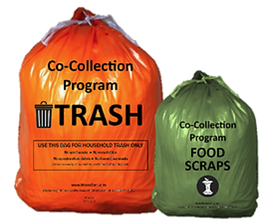 Currently president of the Jonah Center Board and chair of Middletown’s Resource Recycling Advisory Commission, Krishna Winston has been committed to environmental conservation since long before recycling became mandatory in the State of Connecticut in 1991. She served on the task force that designed Middletown’s first recycling program. In October of this year she spent sixteen hours going door to door on Middletown’s north side to inform residents about the new co-collection program beginning in November.
Currently president of the Jonah Center Board and chair of Middletown’s Resource Recycling Advisory Commission, Krishna Winston has been committed to environmental conservation since long before recycling became mandatory in the State of Connecticut in 1991. She served on the task force that designed Middletown’s first recycling program. In October of this year she spent sixteen hours going door to door on Middletown’s north side to inform residents about the new co-collection program beginning in November.
The Context
Connecticut’s waste crisis became impossible to ignore once the MIRA trash-to-energy plant shut down in the summer of 2022, leaving 49 towns—representing about a third of the state’s trash—in the lurch. But the crisis has been in the making far longer. For decades the state DEP (now DEEP) has been setting targets for reducing waste, and time and again those targets have been missed. With more and more disposable and single-use items, along with packaging, much of it difficult or impossible to recycle, many residents’ trash carts are filled to overflowing. Because of contamination, single-stream recycling, originally intended to simplify and promote more recycling, has actually lowered the value of the material collected. To separate mixed recyclables into marketable commodities, material-recovery facilities (MRFs), like the one recently inaugurated by Murphy Road Recycling in Berlin’s industrial park, must be equipped with sophisticated and costly equipment imported from other countries. Whereas recycling once brought in some revenue, in recent years municipalities and hauling companies have been paying for recycling, and the cost keeps going up. Continue reading
Spectra Development’s Vision for City Property
The City of Middletown has engaged Spectra Construction & Development to produce plans for the property between the Middletown Police Department and deKoven Drive. A 2-level parking arcade occupied this site until 2018, when the deteriorating arcade was demolished. The property in its current condition is shown below, looking from Sgt. Dingwall Drive toward the Superior Court building and the Connecticut River.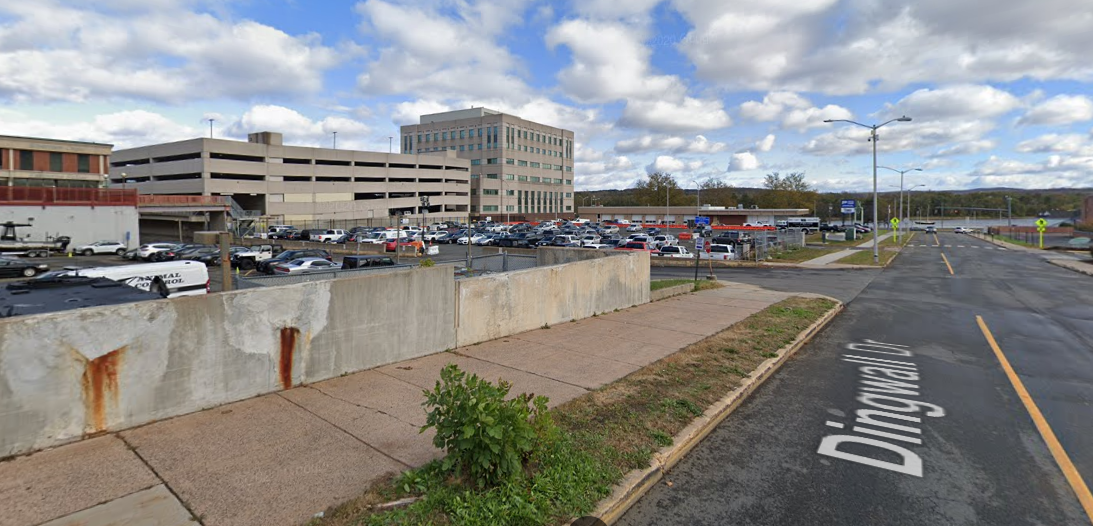
At a recent meeting of the Middlesex Chamber of Commerce, Spectra presented preliminary renderings of one vision for the property. The preliminary nature of these drawings needs to be underscored, because this vision depends upon the City being successful in its effort to acquire the property owned by ATD (Attention to Detail) at the corner of Dingwall Drive and deKoven Drive, shown here.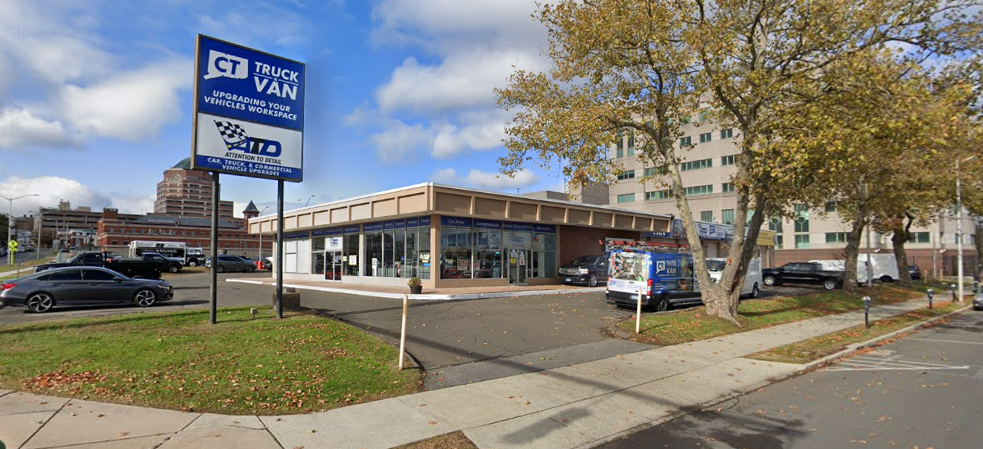
Below are some of the renderings that Spectra shared at the Chamber of Commerce meeting. (We have permission to share these with our readers.) Continue reading
Sidewalk Progress In Portland
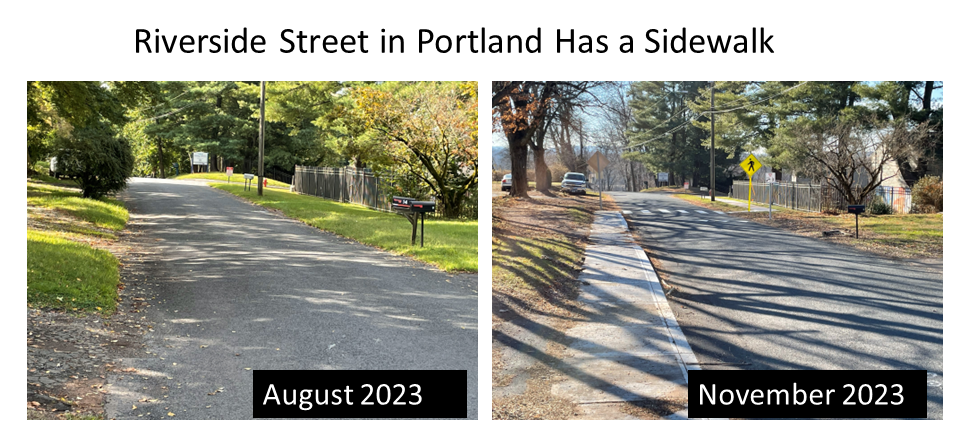 After a long delay, the residents of Chatham Court (Portland Housing Authority) now have a sidewalk leading to Marlborough Street. This project, proposed in 2019 by former First Selectwoman Susan Bransfield and Portland’s Complete Streets Group, provides residents with pedestrian access to medical offices, food shopping, and more. We appreciate the initiative of current First Selectmen Ryan Curley and Public Works Director Ryan O’Halpin, who persuaded property owners on Riverside Street to grant easements for sidewalk construction and relocation of some utility poles.
After a long delay, the residents of Chatham Court (Portland Housing Authority) now have a sidewalk leading to Marlborough Street. This project, proposed in 2019 by former First Selectwoman Susan Bransfield and Portland’s Complete Streets Group, provides residents with pedestrian access to medical offices, food shopping, and more. We appreciate the initiative of current First Selectmen Ryan Curley and Public Works Director Ryan O’Halpin, who persuaded property owners on Riverside Street to grant easements for sidewalk construction and relocation of some utility poles.
More information on Portland’s sidewalk plans can be found here.
We Need Our Readers’ Support
We thank everyone who has supported our Annual Appeal for 2024. We still have a ways to go, however. If you value the progress we have made in improving bike and pedestrian infrastructure, planting trees, and building a network of environmental advocates, please make a donation here. Watch our new project video on our Wildlife Viewing Trail in Middletown’s North End.
Middletown Night Life
Video captured several nights in September and October, 2023, by Phil LeMontagne
During the day it takes some luck to see the nocturnal animals which live all around us. Night time is when they are active. Always searching for food, a variety of nocturnal animals visit our compost pile and a ground mounted bird feeder in the backyard. The images were taken in infrared light. A structure located behind the retina called the tapetum lucidum give nocturnal animals better night vision and causes their eyes to glow when light strikes them in the dark.
Mosaics on Main & Tunnel Vision
Middletown’s Common Council gave the green light to local artist Kate TenEyck to transform the tunnel under Route 9 to Harbor Park and the tunnel entrance. The space will resemble an archaeological dig, using mosaic images depicting Middletown’s cultural and natural history. The image below shows some of the themes that are planned. For more details on this exciting project download the PDF here: Mosaics on Main PDF 2023-09.
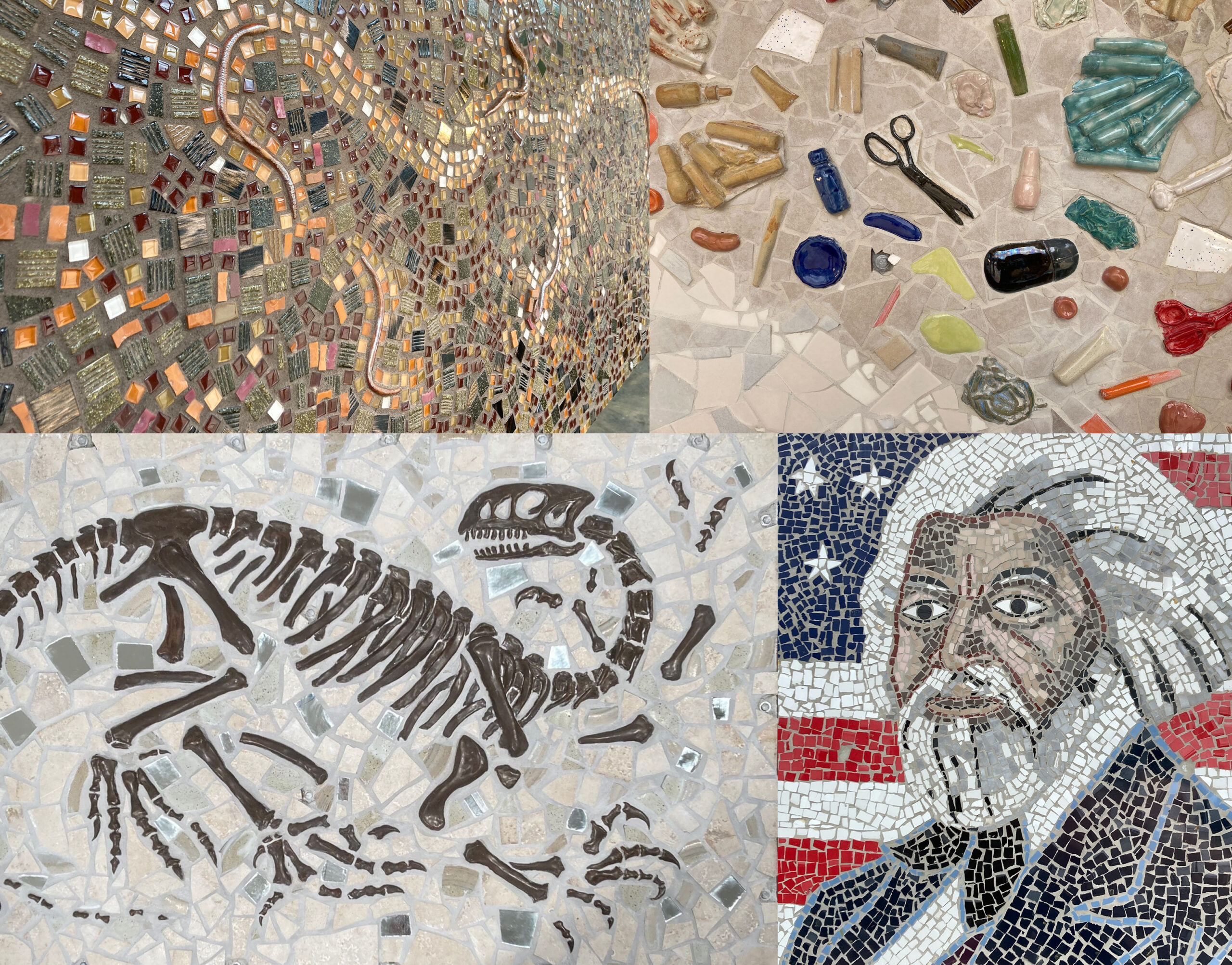
Sidewalk Improvements in Portland
There is good news for the many walkers, runners, and users of wheelchairs and strollers in Portland. The town has plans for another phase of sidewalk improvements along Main Street. Building upon previous town-funded and state-funded sidewalk improvements since 2017, a recent Connecticut STEAP grant (small town economic assistance program) awarded to Portland will allow the town to extend the new Main Street sidewalk approximately one-half mile on the west side of Main Street from Arvid Street to a point near 510 Main Street. Construction is expected to take place during the 2024 construction season. The new sidewalk will be 5 feet wide, replacing the existing, damaged 4-foot sidewalk.
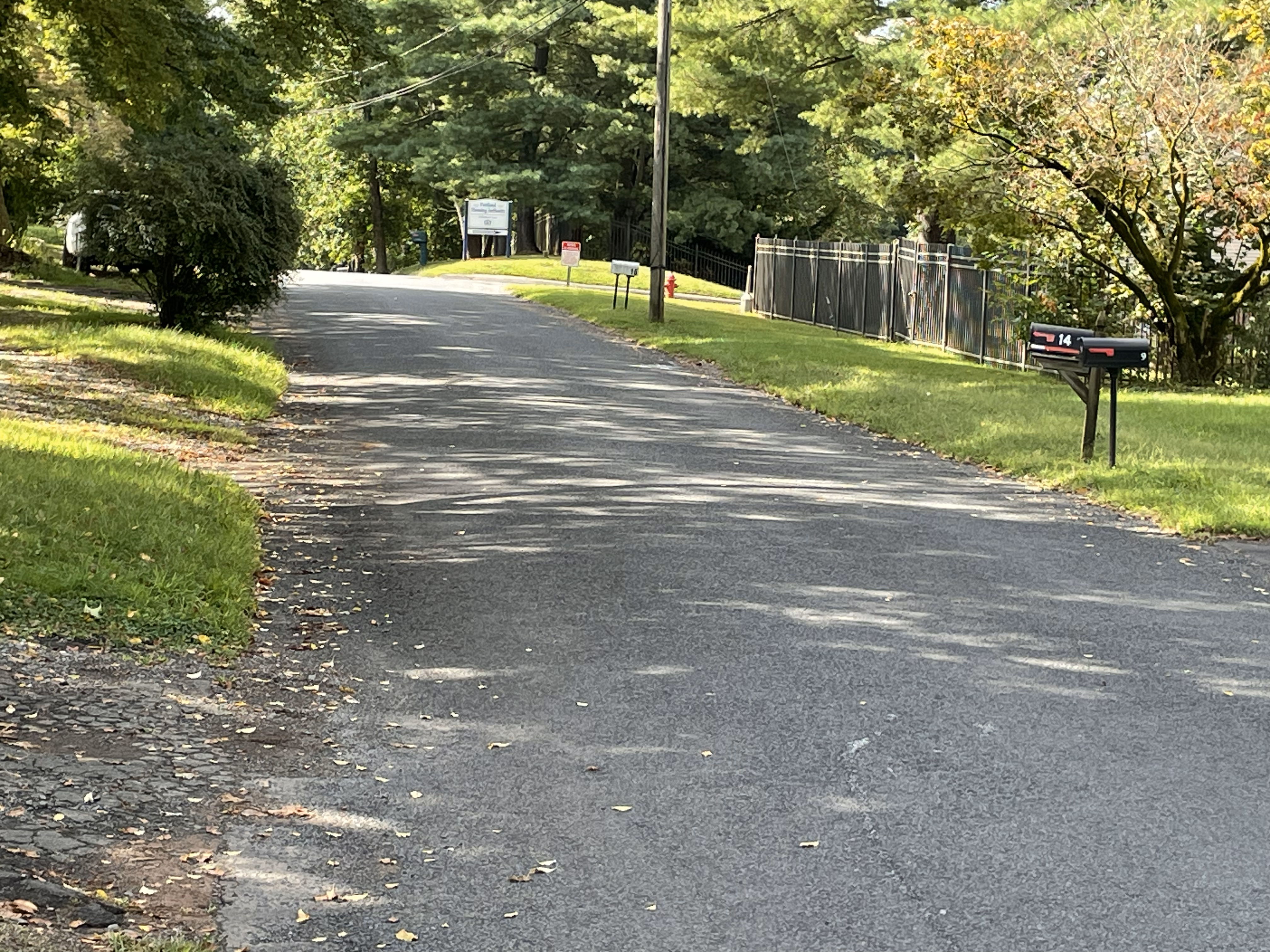 The town was also previously awarded a Community Connectivity grant to provide better accessibility in the area of the Chatham Court apartments. (Photo at left.) This includes a new bus stop and sidewalk on Riverside Street and a short sections of Airline Avenue, Marlborough Street, High Street, and Freestone Avenue (Below is a map showing the larger area of these improvements.) The project will also replace badly damaged sidewalks along High Street going towards Valley View School and Portland High School as well as updating the sidewalk and ramps to be ADA compliant. There will be a redesigned pedestrian crosswalk and an updated signal at the complicated intersection of Marlborough Street (Rt. 66) & High Street. As shown below, this area is also significant because of the possibility of a future extension of the Air Line Trail across this intersection. Construction is planned for the fall of 2023. Continue reading
The town was also previously awarded a Community Connectivity grant to provide better accessibility in the area of the Chatham Court apartments. (Photo at left.) This includes a new bus stop and sidewalk on Riverside Street and a short sections of Airline Avenue, Marlborough Street, High Street, and Freestone Avenue (Below is a map showing the larger area of these improvements.) The project will also replace badly damaged sidewalks along High Street going towards Valley View School and Portland High School as well as updating the sidewalk and ramps to be ADA compliant. There will be a redesigned pedestrian crosswalk and an updated signal at the complicated intersection of Marlborough Street (Rt. 66) & High Street. As shown below, this area is also significant because of the possibility of a future extension of the Air Line Trail across this intersection. Construction is planned for the fall of 2023. Continue reading
Potter Wasp Nest-Building
Phil LeMontagne’s 7-minute video shows us a potter wasp’s craft in building a nest from tiny balls of mud it brings to a plant stem. The video periodically advances to show all stages of the process. Then the nest builder brings in some juicy larvae! Note the intricate opening to the nest the wasp shapes toward the end.
Landscape Art — Imagine It In Your Community
The Jonah Center has long envisioned what major landscape art installations would do for our community. Below are some examples to stir your imagination. (Clockwise from upper left: Face of the Earth by Vito Acconci at Laumeier Sculpture Park in St. Louis, MO; Wave Field by Maya Lin at Storm King Art Center in New Windsor, NY; Low Building With Dirt Roof by Alice Aycock at Storm King; Ball Made From Sticks by Strijdom van der Merwe, Stellenbosch, South Africa.)
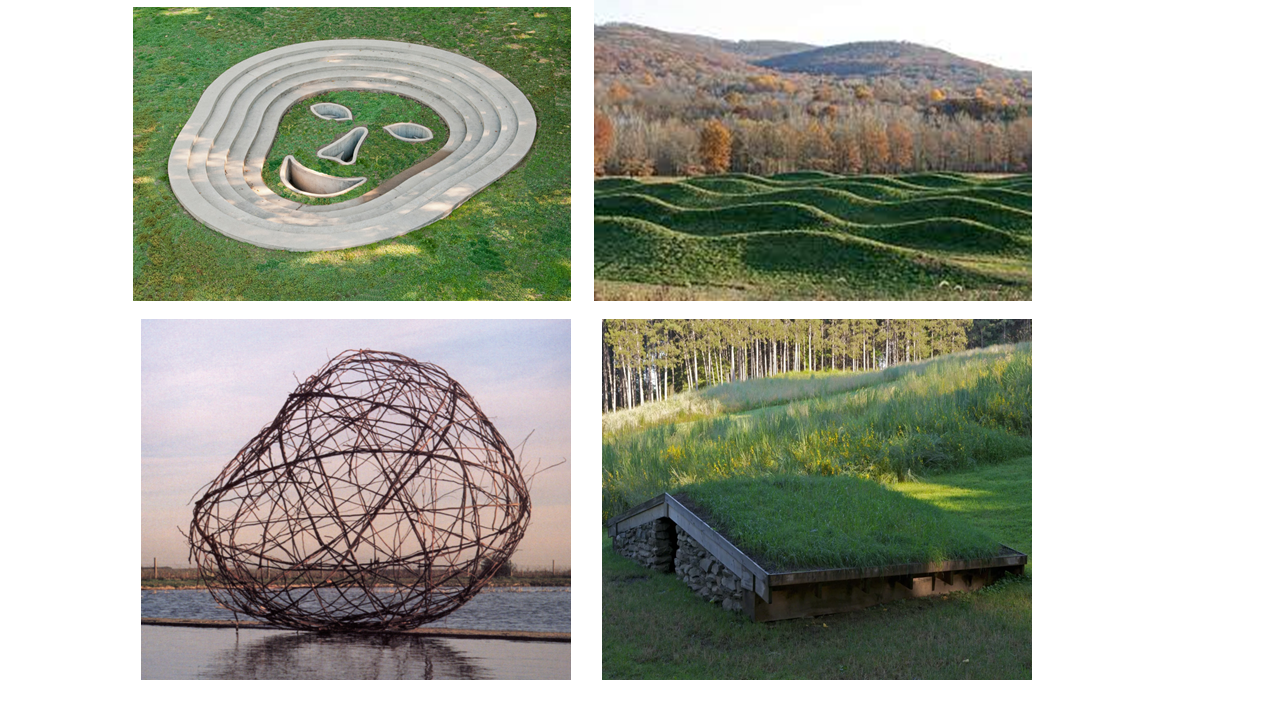
Student Documentary Film: The Pameacha Problem
During the 2022-23 academic year, Wesleyan film students under the leadership of Professor Sadia Queraeshi Shepard produced a short documentary film, The Pameacha Problem, on the citizen campaign to save the pond. The City of Middletown had been planning to turn the pond into a stream and wetland area by removing the deteriorating dam. The film is a good example of using the aesthetic tool of film to tell the story. The film may be viewed here. An article about the film in the Middletown Press can be viewed here. The Jonah Center was instrumental is getting the students interested in this community issue.
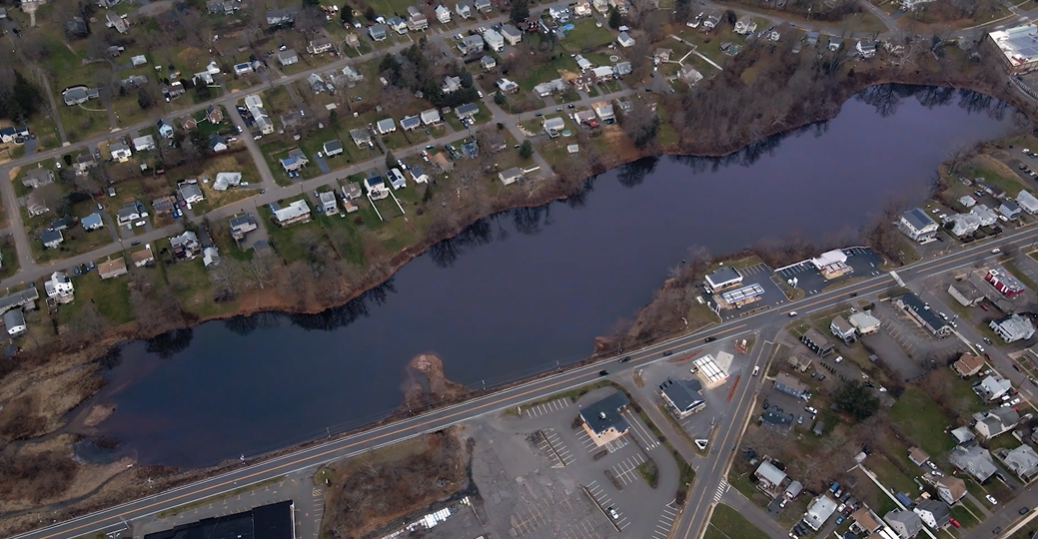
An aerial view of Pameacha Pond included in the film.
Rabbit Quiz
Is this adorable bunny, enjoying a feast of plantain, a New England Cottontail or an Eastern Cottontail? If you can tell which, let us know. Notice the ear action. Thank you, Phil LeMontagne, for providing this closeup video to our viewers.













